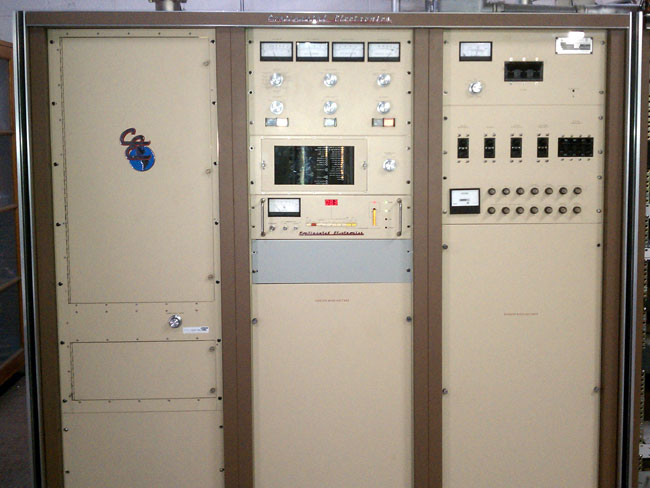This is perhaps my favorite model FM transmitter, the Continental 816R2:

I have known this particular transmitter for almost twenty years. It was installed new at WFLY 92.3 MHz in August of 1986. I was reflecting on that today, as I replaced the bad 4CX250B driver tube which caused the output power to drop to 10 percent. The power control is via SCRs on the HV power supply, not the more common PA screen voltage adjustment. That means the transmitter comes on with zero PA voltage and ramps up to full power. It makes the whole thing “smooth” like driving a Mercedes.
I have experienced a few overloads, which usually are accompanied by the room lights dimming slightly and the plate voltage turning off. Again, no theatrics; no big blue flashes, no loud arcs, etc. Simply turns off the high voltage and light a LED on the overload board to tell the operator what happened.
Over the last 20 or so years, I think I have had three out-of-the-ordinary problems with this transmitter:
- The power supply pass transistor in the 802 exciters failed. This is a TO-3 case mounted on a heat sink, something like a 2N2225 I think. It runs hot. Anyway, the exciter had no 20-volt supplies, which was pretty easy to diagnose.
- The SWR foldback did not work during an ice storm. This transmitter feeds an ERI antenna without heaters or radomes. About once every 2-3 years there is an ice buildup, which will cause the transmitter to fold back. In this case, the transmitter overloaded and went off the air instead. Traced back to a bad/dirty connector on the directional coupler.
- One of the SCRs exploded while running on the generator. Figured out this was caused by harmonics from the generator exciter. Replaced the exciter with a different version, no SCR problems were encountered after this fix.
I like the Continental tube-type transmitters, they are solid units that perform well and have years of reliable service if properly maintained.
